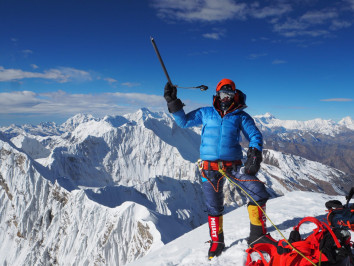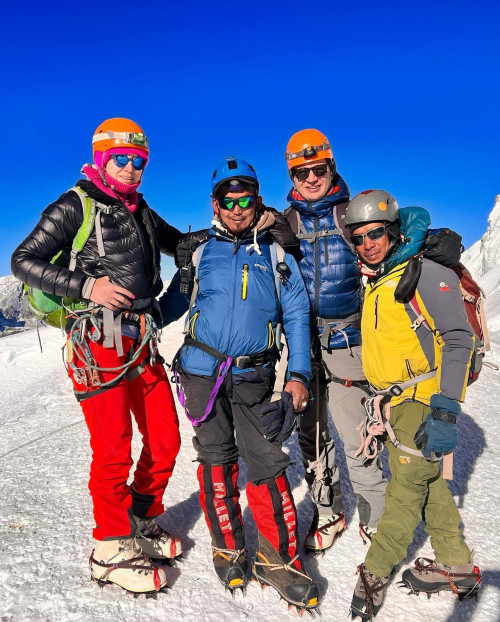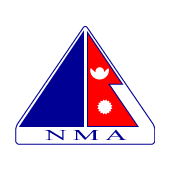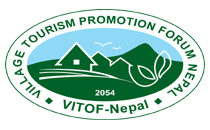What Is the 2 PM Rule on Everest? Everything You Need to Know for Summit Day Safety
.jpeg)
 Kedar Neupane
4th Aug, 2025
Kedar Neupane
4th Aug, 2025
Kedar Neupane
I am Kedar Neupane, a passionate traveler, entrepreneur, mentor, and social contributor, born and raised in a village near the Nepal-China border in Sindhupalchok, Nepal. With a Master’s degree in Business from Tribhuvan University and Level 2 proficiency in the German language, I have dedicated my life to tourism, trade, mentorship, and holistic well-being.
🌍 A Global Explorer with a Vision
Having explored 26+ countries, I have gained profound insights into diverse cultures, business landscapes, and global tourism. My travels have taken me to:
🇹🇭 Thailand | 🇧🇹 Bhutan | 🇲🇾 Malaysia | 🇸🇬 Singapore | 🇨🇳 China | 🇭🇰 Hong Kong | 🇩🇪 Germany | 🇵🇱 Poland | 🇦🇹 Austria | 🇨🇭 Switzerland | 🇭🇺 Hungary | 🇳🇱 Netherlands | 🇧🇪 Belgium | 🇫🇷 France | 🇦🇪 UAE | 🇬🇧 UK | 🇺🇸 USA | 🇹🇷 Turkey | 🇶🇦 Qatar | 🇮🇳 India | 🇮🇩 Indonesia | 🇨🇦 Canada
Through my journeys, I have developed a deep appreciation for cultural exchange, adventure tourism, and sustainable business practices.
🏔️ Entrepreneurial & Professional Journey
I am actively involved in tourism, trade, and mentorship, leading multiple ventures that promote sustainable travel, adventure tourism, and business development:
✔ Founder & MD – Actual Adventure Pvt. Ltd. (A leading adventure travel company in Nepal)
✔ CEO – Himalayas Destination Management Company (Creating premium travel experiences)
✔ MD – Nepal Export & Import Pvt. Ltd. (Promoting Nepalese products globally)
✔ MD – Actual Mentor Pvt. Ltd. (Empowering entrepreneurs and professionals)
✔ Chairman – World Expedition Nepal (Focusing on high-altitude expeditions and trekking)
Through my entrepreneurial journey, social contributions, global explorations, and commitment to lifelong learning, I strive to inspire others to pursue their passions while making a meaningful difference. My dream is to build a world where travel, business, and holistic well-being come together, fostering growth, sustainability, and happiness for all.
The 2 PM Rule on Mount Everest is a critical safety guideline used by climbers and guides during the summit push. It advises that climbers must reach the summit no later than 2:00 PM and begin descent, regardless of how close they are to the top. Ignoring this rule has led to several tragic deaths in Everest climbing history.
Table of Contents
What Is the 2 PM Rule on Everest?
The 2 PM Rule is based on the understanding that staying too long in the Death Zone (above 8,000m) dramatically increases the risk of death due to exhaustion, oxygen depletion, bad weather, and other dangers.
Why 2 PM? The Reason Behind the Rule
This rule is not arbitrary. It's grounded in real risks that escalate as the day progresses on Everest summit day:
| Reason | Explanation |
|---|---|
| Weather Deterioration | Storms and high winds are more common in the afternoon. |
| Limited Oxygen Supply | Bottled oxygen is calculated for a limited time; running out means severe hypoxia. |
| Exhaustion and Fatigue | Climbers are at their weakest during descent, making late summits dangerous. |
| Nightfall Risk | Descending in darkness increases chance of fatal accidents or getting lost. |
| Increased Time in the Death Zone | The longer you stay above 8,000m, the more your body deteriorates. |
Typical Everest Summit Day Timeline
To adhere to the 2 PM rule, here's what a standard summit push might look like:
| Time | Activity |
|---|---|
| 8:00 PM (previous night) | Depart Camp 4 (South Col) |
| 1:00 AM | Reach the Balcony (8,400m) |
| 4:00 AM | Pass the South Summit (8,750m) |
| 6:00 AM | Reach the Hillary Step and push to the summit |
| 8:00 AM | Ideal summit time |
| 2:00 PM | Mandatory turnaround time |
| 5:00 PM | Return to Camp 4 |
Risks of Ignoring the 2 PM Rule
History has shown that late summit attempts often end in disaster:
- 1996 Everest Disaster: Climbers summited after 2 PM and got trapped in a deadly storm—8 deaths occurred.
- Oxygen Failure: Many climbers run out of oxygen near or after summit and collapse on the descent.
- Fatal Traffic Jams: Climbers stuck in long queues push summit attempts late, risking lives.
Benefits of Following the Rule
| Benefit | Impact |
|---|---|
| Safer Descent | Better control and vision while descending during daylight. |
| Avoids Weather Traps | By descending early, you avoid afternoon storms or whiteouts. |
| Prevents Oxygen Crisis | Return before exhausting supplementary oxygen supply. |
| Lower Fatality Risk | Majority of deaths happen during descent—not ascent. |
Expert Opinions
– Ed Viesturs, Legendary Mountaineer
– Russell Brice, Veteran Expedition Leader
Who Enforces the 2 PM Rule?
The 2 PM rule is enforced by experienced guides and expedition leaders from trusted mountaineering companies. Climbers working with professional outfitters like Actual Adventure Pvt. Ltd. are briefed and monitored to adhere to this rule strictly. For independent climbers, it’s a personal responsibility to follow the guideline.
Final Thoughts: Safety Over Summit
The 2 PM rule is not just a suggestion—it’s a life-saving principle. Following it ensures you don’t trade your life for a photo on the summit. Always remember, the mountain will always be there, but your life is precious.
Stay smart. Stay safe. Respect the 2 PM Rule.
1. What Is the 2 PM Rule on Everest? Everything You Need to Know for Summit Day Safety
The "2 PM Rule" on Everest is a life-saving guideline that states climbers must reach the summit of Mount Everest no later than 2:00 PM. If a climber hasn't summited by this time, it's highly recommended they turn back. This rule helps climbers avoid descending in the dark, running out of supplemental oxygen, and encountering deadly weather changes. Many fatal accidents on Everest have happened because this rule was ignored. For trekkers, climbers, and operators offering Mount Everest expedition packages, highlighting this rule shows professionalism, risk awareness, and ethical climbing standards.
2. The 2 PM Rule on Mount Everest: A Life-Saving Climbing Guideline
Known as a mountaineer’s golden rule, the 2 PM guideline is not just a suggestion; it's an essential part of Everest summit day strategy. Reaching the summit too late significantly increases the risk of getting caught in afternoon storms, losing light, and experiencing extreme exhaustion on the way down. Promoting this rule in your Everest expedition content helps build trust with clients by emphasizing your company’s commitment to safety and responsible climbing ethics. Keywords: Everest safety rule, 2 PM Everest summit time, responsible guiding Everest.
3. Why Reaching Everest's Summit Before 2 PM Can Save Your Life
Ever wondered why expert guides push for an early summit on Everest? Reaching the summit before 2 PM can be the difference between life and death. Afternoon snowstorms, low visibility, and oxygen depletion have claimed many lives on the mountain. As an adventure brand, educating your audience about this can build authority. Include client stories, case studies, and expert tips in your Everest blog series to improve SEO and showcase your team’s knowledge.
4. Mount Everest 2 PM Rule Explained: Summit Safety Above 8000 Meters
In the death zone above 8000 meters, every second counts. The Mount Everest 2 PM Rule ensures climbers limit their time in this high-risk area. By turning around by 2 PM, climbers can avoid the most dangerous part of the day on Everest. Add this detailed explanation in your expedition itinerary, FAQs, or safety briefings. It also makes a great internal blog post or lead magnet for marketing your Himalayan expedition services.
5. Everest Climbing Safety Rule: Understanding the 2 PM Turnaround Time
This rule should be at the core of every Everest summit push plan. If your expedition company emphasizes the 2 PM turnaround rule, clients will see you prioritize safety over summit fever. Include this content in onboarding emails or client briefing documents. SEO keywords to include: Everest summit safety rule, turnaround time Everest, 8000m death zone rule.
6. 2 PM Rule on Everest Summit Day: Don't Risk Your Life for a Few Extra Hours
Summit fever can cloud judgment, leading climbers to push beyond safe limits. This headline appeals emotionally to readers and reinforces a critical safety message. As a trekking company or guide service, sharing real-life scenarios and expert opinions on the 2 PM rule creates high-engagement blog content. Use it for Instagram carousels, YouTube shorts, or Everest awareness campaigns.
7. Summit or Safety? The 2 PM Rule Every Everest Climber Must Follow
This headline prompts a critical choice. Market your Everest packages as "Safety-First Expeditions" that follow proven climbing practices like the 2 PM rule. Include testimonials and summit stories that show how following this rule helped clients return safely. Focus on keywords: Everest summit advice, Everest climb safety, safe Everest expedition company.
8. Avoid Death in the Death Zone: The Everest 2 PM Rule You Can’t Ignore
For high-impact blog posts or safety videos, this title draws immediate attention. Emphasize how the death zone (above 8000m) is not to be underestimated. By following the 2 PM rule, climbers drastically reduce their risk of becoming another Everest statistic. Perfect for awareness campaigns and media pitches. Target SEO keywords: Everest death zone rule, high-altitude climbing risks, Everest safety briefing.
9. Reaching the Top Isn’t Everything – Everest’s 2 PM Rule Could Save You
Use this for newsletter content or inspirational posts. The quote-style title grabs attention and encourages emotional storytelling. Reinforce that true success is not reaching the top but returning alive. Feature insights from guides, Sherpas, and previous clients. Ideal for conversion-focused pages promoting your ethical Everest expedition services.
10. Mount Everest Summit Timing: The Crucial 2 PM Rule for Safe Descent
This is a great title for SEO-rich guides and evergreen blog articles. Outline a full summit day timeline, explain why early starts matter, and show the time sensitivity at high altitude. Build authority as a trustworthy expedition provider. Include internal links to gear checklists, training tips, and acclimatization plans to boost site engagement and dwell time.
Written by: Actual Adventure Pvt. Ltd. | Experts in Himalayan Expeditions
Recent Posts

18th Nov, 2025

14th Nov, 2025
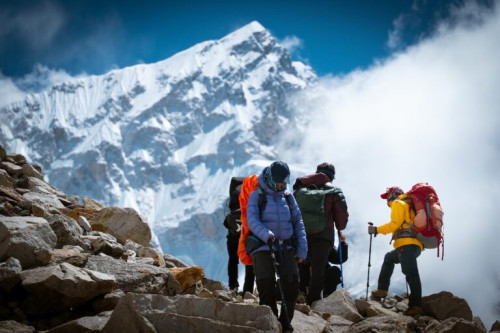
12th Nov, 2025
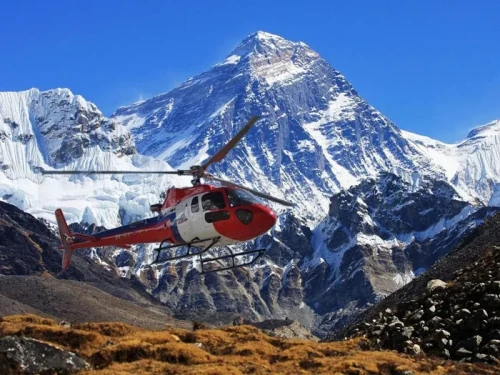
28th Oct, 2025

19th Oct, 2025

18th Oct, 2025

14th Oct, 2025

14th Oct, 2025
